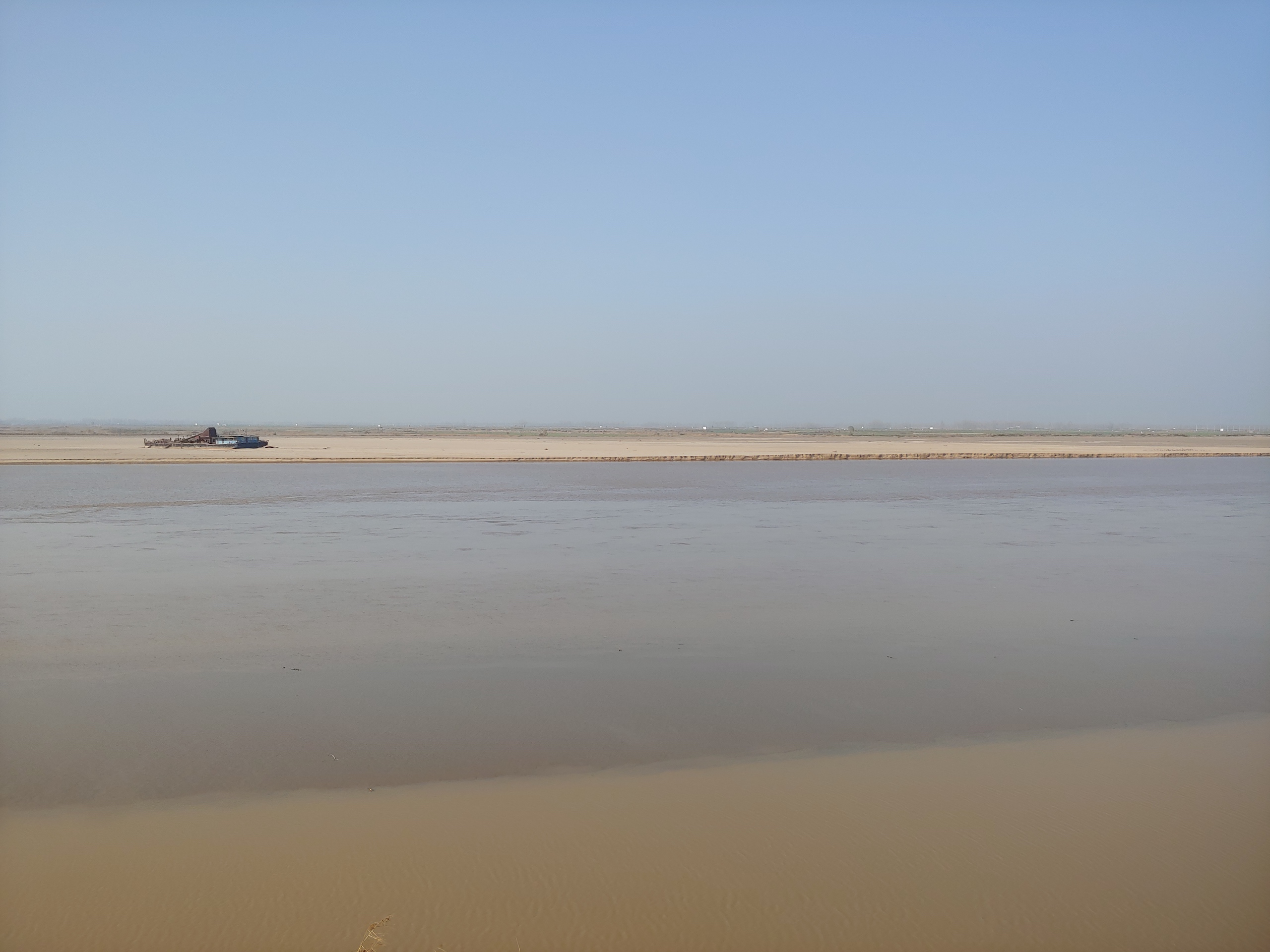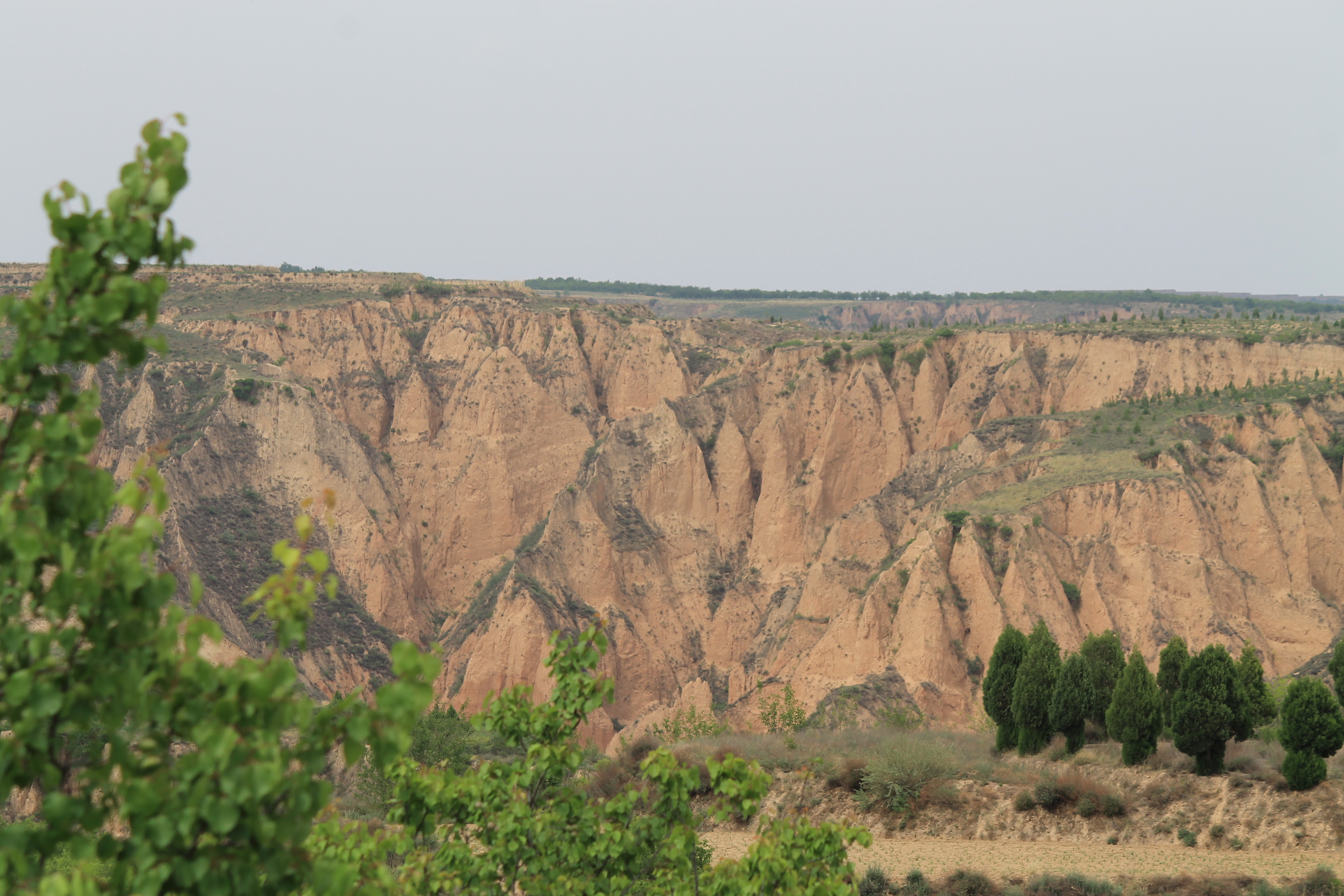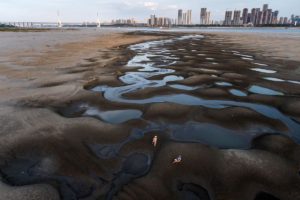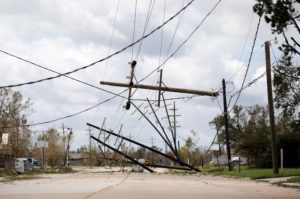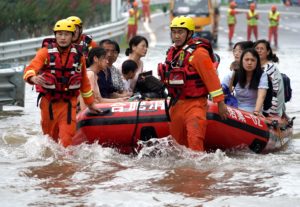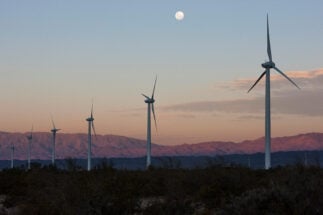The Yellow River, the world’s sixth-longest and most sediment-laden, occupies a singular place in Chinese history and national identity. It is often associated with great misery caused by its flooding and changes of course, and Herculean efforts by political regimes across the millennia to “tame” it. There has long been a good understanding that such misery is caused by the high concentration of sediment the river carries, which renders it yellow. When deposited downstream, this sediment raises the riverbed, making it prone to flooding or changing course.
But soil erosion and sedimentation are not entirely natural processes. They are to a large extent a product of humans’ own making. So is the river itself.
In her 2021 book, The Yellow River: A Natural and Unnatural History, Ruth Mostern argues that the interrelation between human activities upstream on the Loess Plateau and flooding and river management downstream on the floodplain has not been well understood, despite the efforts of generations of historians. Partly that’s because the vast majority of Yellow River histories have focused on the floodplain, where the population, political and economic centres of empire have resided. Partly, she says, it’s because the short lifespan of humans has limited our understanding of long historical processes. Mostern’s innovative approach to her new book surpasses such limitations.
A professor of history at the University of Pittsburgh, Mostern is not a conventional historian but one who harnesses the power of databases and computer programmes to sort and mine vast volumes of material for insight. For a decade, Mostern worked with colleagues and students to take advantage of the consistent and unparalleled documentation of the Yellow River, building an information system called the Tracks of Yu Digital Atlas. It contains thousands of records detailing floods and droughts, river management events, policy arguments and funding requisitions from across the entire river basin over a period of 2,000 years.
With the grand spatial and temporal vision provided by that system, she aims to “historicise the sediment”. She wants to understand what exactly humans did on the Loess Plateau that led to particular ecological consequences on the floodplain, and hydro governance responses from the imperial court. She describes the book as a “hydrosocial” biography of the river and an attempt to “see the Yellow River as a whole”.
Examining water management thoughts and policy proposals and their fate in different eras, the book also offers “a historical case about the limits of what is politically possible for environmental politics,” a theme that can’t but remind one of the international climate politics of our own era.
The book with its holistic approach is particularly relevant at a time of repeated flooding in China’s big river basins under extreme weather events, unprecedented investment in hydro-engineering, and the state’s call for “whole river basin approaches” to managing the Yellow and Yangtze rivers.
Below is China Dialogue’s conversation with Mostern about the book, her views about how history rhymes with and informs the present, and what rivers really are. The interview has been edited for clarity and brevity.
China Dialogue: In the introduction, you write that the 12th-century Yujitu (《禹迹图》, Map of Yu’s Traces) is one of the inspirations for the book. You don’t explain why. How did it inspire you?
Ruth Mostern: I’ve been fascinated by that map since I was in graduate school 30 years ago. I was mesmerised by its extraordinary accuracy, with all the graticule and grid lines. I had no idea that there were any medieval maps that had that kind of attention to scale and accuracy and mathematical ways of thinking about the geospatial world. There is also the fact that the river system is so prominent and accurate on that map.
It raises so many interesting questions, for instance, about how and why this 12th-century map would have been created that centres so much on hydrology. The map was kept at the centre of my consciousness as I learned more as a graduate student about Yu the Great (the legendary prehistorical king who supposedly inaugurated dynastic rule in China more than 4,000 years ago) and the way his legend was used in political rhetoric during the SongDynasty (960–1279 CE). My first book, Dividing the Realm in Order to Govern: The Spatial Organization of the Song State, is about political geography in the Song, and it also used that map. The map was one of the ways through which I pivoted from thinking about political geography to environmental history, with Yu as the iconic figure who connects those two pursuits together.
What do you see as the role the legend of Yu played in shaping hydro engineering in imperial China? Although he is highly revered, it seems his emphasis on going with water’s power was either marginalised or adopted only out of expediency.
What first interested me about Yu the Great was the idea that he established political authority and a taxation system – a system of political economy – which was predicated first on hydrology. For years, I thought that was the message of the story of Yu. But as I read more about him I realised the part of the story that I had missed for a long time: his act of managing water came after the supposed failure of his father Gun (鲧).
According to some versions of the story, the reason Gun failed was that he was only focused on control, on building high levees, and treating water management 100% as a big engineering problem. Yu was successful because he started with an analysis of topography and terrain and gravity, and the natural courses of the water. He built canals and reservoirs as well as levees and used an approach that followed the water’s shi (势, power, capacity or propensity) that worked with the propensities and powers of the water as well, rather than just simply trying to lock it into place. When I think about the influence of Yu the Great for millennia, I think of it as being a sort of dialogue back and forth between, metaphorically speaking, the hydrocrats who were following in his tradition, versus the ones who were following in the tradition of his father.
But actually, Yu is more remembered as the one who established that system of political economy, the centralised water management system in public culture. Not many people talk about his philosophy of managing water.
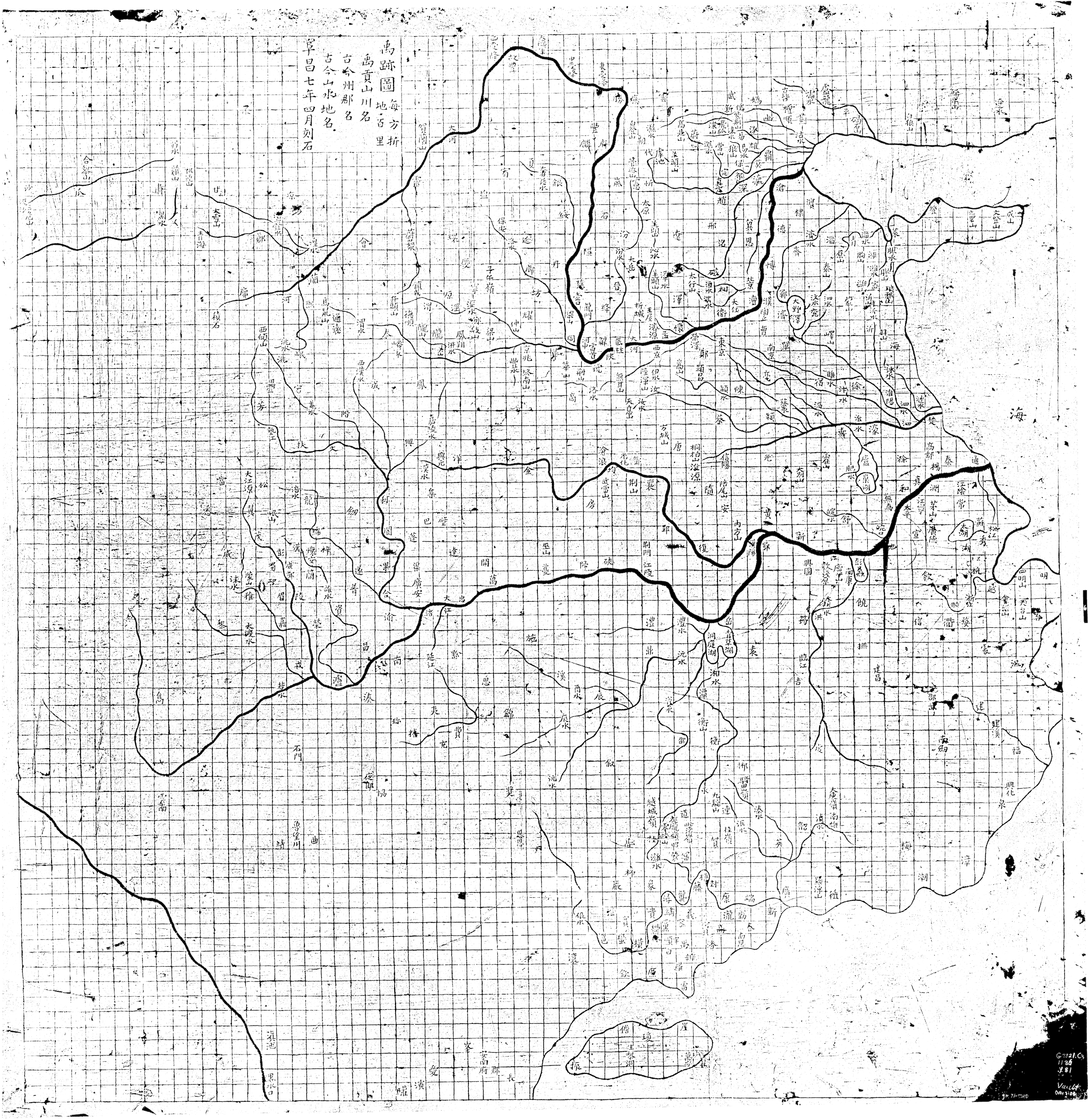
When the ecological condition on the Loess Plateau and political imperatives on the floodplain changed, the idea of managing shi also changed. In contrast to Yu the Great, Pan Jixun’s idea of managing shi was no longer about dispersing water, but about confining the river in its channel with immense waterworks, and using the concentrated water to scour from the channel the ever-increasing sediment descending from the degraded Loess Plateau, mainly to aid passage in the Grand Canal.
A key part of my argument is that what we think of as being a mode of water management that existed for all time was actually one that emerged after Pan Jixun (潘季驯, 1511–1595, an influential hydrocrat in the Ming dynasty who served as the imperial superintendent of the Grand Canal). In fact, Pan’s approach was only used consistently during the “long 18th century”. That’s clear from the database that was so significant to how I established my argument and is how I kept track of thousands of years at once. The era of intensive river management begins with Pan Jixun, and flourishes during the Qing (1644–1911). The database also includes text excerpts, so it would be possible to track keywords of water management, like shi over time. I’m working on making that data web-accessible so that I or somebody else could do that kind of analysis.
One achievement of your approach is that by piecing together events on a great spatial and temporal scale, you manage to attribute often disastrous historical events to ecological degradations caused by human activity – colonisation, agricultural expansion and war – while others have attributed them to “natural” phenomenon, like natural climatic changes. Are there other examples in the book of this approach managing to challenge established understanding?
Well, I think there are two things. One is the way in which the book reconfirms conventional wisdom. With data analysis, I reconfirmed the famous insight of Tan Qixiang (谭其骧, 1911–1992, a leading Chinese historical geographer of his time) that there was an 800-year period, from the early Eastern Han (25–220 CE) until the Song (960–1279), when there was essentially no flooding.
However, Tan and others imply that after that there was always high flooding, and there was always a lot of state intervention. What I discovered is that the 18th century stands out as a real anomaly. In it, the rate of floods was very low compared to the long period prior to that, basically the late Tang (618–907 CE) through the Ming (1368–1644), and the rate of management events – building levees, maintaining levees, fixing breaches in levees – was unprecedentedly high. There was an interesting turning point in the late 17th century – I think of the Qing founding as the beginning of the long 18th century – when the Qing regime was determined to maintain the Grand Canal and to make its transportation as efficient as possible by locking itself into a mode of intensive Yellow River floodplain management. That only existed for about one century. Realising that is the key way that my book overturns conventional wisdom. People have tended to think that the Yellow River always consumed a lot of resources, flooded frequently, and caused great misery, but it was really only like that in the early 19th century as the Qing hydraulic system aged. It was only for a few decades that the system was consuming a lot of money and yet not preventing floods. So, I think in many ways people look backwards from the 1820–40s Yellow River, and assume that it was always like that. It really wasn’t.
One striking aspect in the book is that observers from different eras did point out the correlation between soil erosion upstream on the Loess Plateau and floods downstream on the floodplain, but conservation on the plateau as a solution to flooding barely became policy, even though regimes paid a heavy price for that failure, sometimes their own demise. Why were such views always sidelined? You pointed to political reasons like administrative fragmentation and the vested interest of the flood management industry, but are there more persistent reasons?
This is another area where I think there’s room for more research. The understanding that I’ve proposed in the book is basically a simple question of path dependency – that once the Loess Plateau was under intensive agriculture or had become the site of significant military conflict, what can you do? You can’t say “sorry, millions of people, you can’t farm here anymore,” right? That’s not feasible. That’s also true of the floodplain. There would have been times, basically from the Jin (1115–1234 CE) and Southern Song (1127–1279), Yuan (1271–1368), into the Ming (1368–1644) dynasties, when regimes could have instituted policies to discourage dense population on the floodplain, but it did not happen that way. Policies that encourage population density are generally a one-way street. Once there is a large population in place, you can’t go back again.
This is where I think it’s important to understand that in many ways the Qing (1644–1911) was an anomaly, both on the Loess Plateau, where levels of soil erosion were unprecedented, and on the floodplain where the population doubled or even tripled. Where do you put those people? You have to put them somewhere, which means that you have to lock the river in place and allow more dense settlement on the floodplain. And also, at the same time, you have to encourage colonisation and farming and deforestation of the Loess Plateau where policy incentives encouraged people to move out of Hebei and Shanxi and into Shaanxi. I’m sympathetic to the decisions of regimes that, at some level, encouraged a version of environmental unsustainability, but one that also absolutely kept millions of people alive.
In some ways, this seems like a simple story, right? More deforestation, more flooding. It’s the declensionist version of environmental history – things get worse and worse. But during the Yuan and during the late Ming there was a certain amount of depopulation on the Loess Plateau. So I’m also trying to trouble and complicate the story. There were times of reforestation and regrowth on the plateau, and there were times of less intensive management on the floodplain. Policies, demographics, and geopolitical and climatic circumstances all changed in complex ways over long time frames.
Some of the problems with imperial river management persist to this day, such as administrative fragmentation, which results in local governments competing for control over water resources. This seems to be the case with a proposed sluice wall on Poyang Lake, and a proposed dam on the Yellow River between Ningxia and Gansu. What lessons can be learnt from history?
That’s a great question. The examples that you provided are absolutely on my mind. States always act like states, which is to say there are always large-scale policy directives coming from the capital, but there are also always local officials of one kind or another, whose job is to operate within the constraints of large-scale policy directives while also following their own personal incentives. There is always going to be inherent friction between a top-down policy, bottom-up resistance to policy, and also bottom-up effort to make policy work in local circumstances. This is true anywhere in the world at any time.
Another lesson is that I have a grave suspicion about whether large-scale engineering interventions can ever be successful for more than some number of decades. I look at projects like the South–North Water Diversion, or other large-scale projects like dam building, especially during the era of climate change that we’re living in, and I assume that they can work for a while, but they can’t be successful forever.
Maybe there’s nothing wrong with this. It’s possible to think of that as failure and to be pessimistic. But in a way, maybe it means the opposite of failure. In any given time, within the political possibilities and technology that exist, in the context of the problems that people are trying to solve, people do, in fact, ingeniously come up with solutions that last for a while. I think that optimistic point of view is also one of the lessons of my book.
The epilogue of the book ends with a sense of affirmation of human control of nature in the Anthropocene, even though the history itself is quite depressing. Could you speak more about that view? It seems you think we can control the consequences of control, and that’s the only way forward. Right?
Well, sort of. I think the line that really struck me in that Elizabeth Kolbert article that I quoted is that historians and other commentators used to talk about the control of nature. Now, all we can talk about is the control of the control of nature. I start the book with a quote from Edward Burtynsky, a fantastic landscape artist who’s really had an impact on me. He says, there is no sublime nature anymore, what’s relevant for our times is to show how we have changed it in significant ways in pursuit of progress. And that’s really the point I make at the end also with that Elizabeth Kolbert quote – what do humans do next once we have irrevocably transformed nature into a kind of landscape of which we ourselves are the most active and dynamic agent?
Rivers and humans are both restless landscape features, and they don’t have the same interests as one another
So, basically, it’s not saying that the control of nature will ever work perfectly, but that we can’t walk away from what we’ve done. One thing we haven’t talked about yet is the regreening of the Loess Plateau. A lot of land is being taken out of agricultural production and being reforested, and that’s a really positive development. It’s interesting, though, if you’ve travelled to Shaanxi, or if you’ve seen images of what those newly reforested landscapes look like. They don’t look like some sort of pristine nature. They’re rows of trees, grids of saplings, of identical species. It’s not creating an organic forest, but it is creating an erosion-control landscape and it is creating a carbon dioxide absorption landscape. That’s what I mean with that Elizabeth Kolbert quote. We’re not turning back the clock with the reforestation of Shaanxi. We’re not turning it back to some prehuman landscape, but we’re controlling the control of nature.
We still have big floods today. In 2020, it was in the south, last year, it was in the Yellow River basin. Sometimes they’re called “thousand-year floods”. On one hand, engineering capability has increased exponentially, on the other, old problems persist.
And this is really a global issue. Here in the United States, I think about the Mississippi River, which has also persistently flooded, which flooded disastrously in the 1930s, and again just a couple of years ago. Some of this is that rivers always occupy low-lying areas. Rivers always produce bands of very fertile soil next to them. Rivers allow things to move from place to place. Humans like this. Humans want to be close to water, close to routes of transportation, and close to fertile soil. Rivers, absent human activity, always deposit sediment, change their courses, and move from place to place.
I begin the book with the notion that we think of rivers as channels of water. But rivers are not channels of water. We humans make maps, such as the Yujitu, and in maps humans think of rivers as channels of water. If you think of rivers instead as being dynamic parts of complex ecosystems that basically are about forces of gravity moving things from higher to lower elevation, not only water but also everything that is entrained in the water, rivers will always flood. That’s what rivers do. That’s not to say humans are passive actors by any means. Humans can do many, many things in order to manage that risk, in order to decide upon settlement patterns, to enact engineering and so on. But if you put the agency of rivers, if you put the water itself and the force of gravity moving water from higher to lower elevations in a particular part of the Earth’s terrain, rivers will always flood.
At some level, this isn’t specifically about the Yellow River or the imperial era. One of the things I most learned from writing this book is that any of the world’s great rivers are restless. They change their course, they don’t occupy the same channel every season or every year or every century, especially when humans also become landscape actors and increase the rate of erosion upstream and lock the river in place downstream. Rivers and humans are both restless landscape features, and they don’t have the same interests as one another.
One reason to take a whole river basin approach is that it makes it possible to tell a social history story, a story of political economy, but it also makes it possible to better understand what rivers are.
The Yellow River: A Natural and Unnatural History by Ruth Mostern was published by Yale University Press in September 2021
Read more from China Dialogue’s Environmental History Series.




